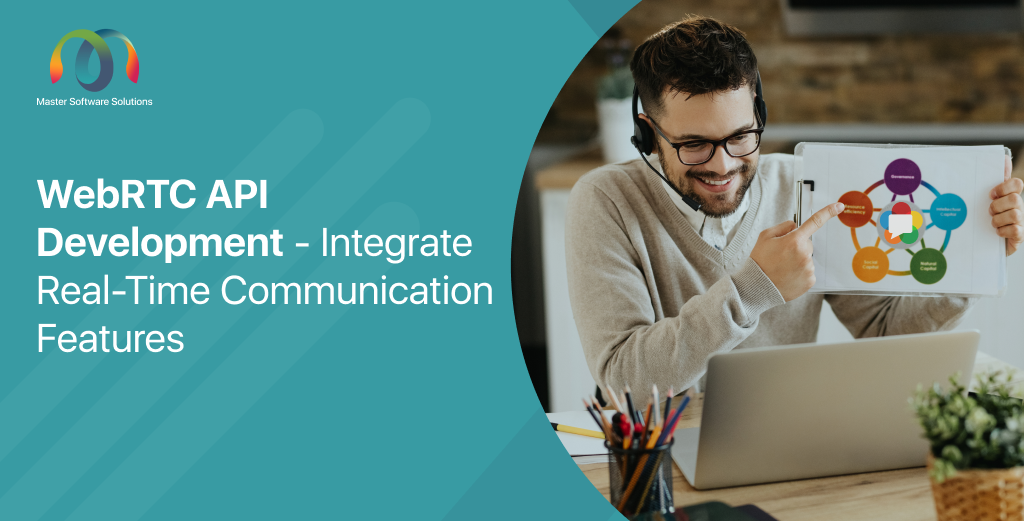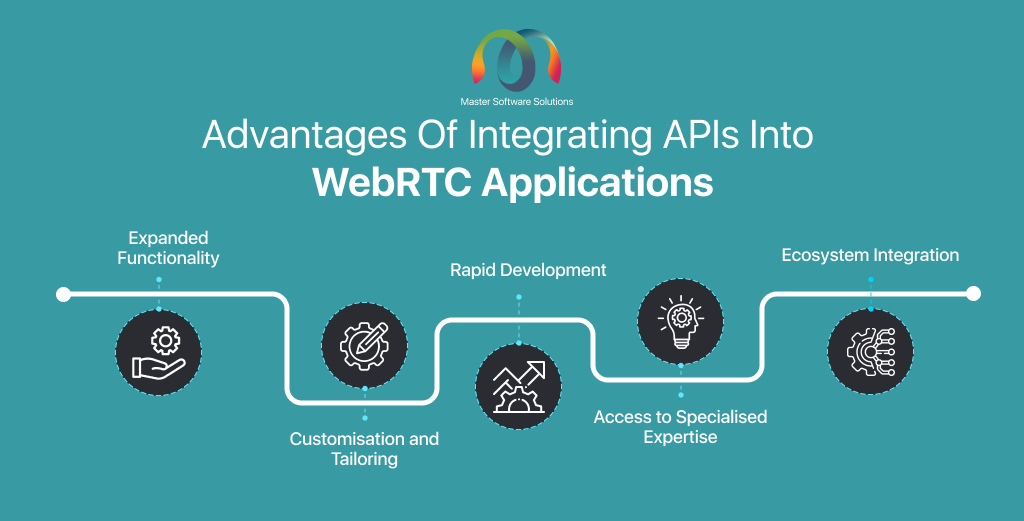Technological advancements have made instant communication the norm, and developers consistently seek ways to improve user engagement and interaction. WebRTC is a revolutionary technology that empowers developers to integrate real-time communication features directly into applications.
This blog will explore WebRTC API development and how to integrate real-time communication add-on features to improve user engagement and experience.
What is WebRTC API development?
WebRTC API development includes using WebRTC (Web Real-time Communication) APIs (Application Programming Interface) to integrate real-time communication features into web applications. WebRTC offers a set of open-source protocols and APIs. The protocols and APIs allow developers to enable real-time audio, video and data communication. It is done directly within web browsers, with no additional plugins or software installations required.
What are the APIs integrated with WebRTC?
Developers can create various real-time communication applications, such as video conferencing platforms, live streaming services, online gaming platforms, collaborative work tools, and customer support chat systems. WebRTC API development allows developers to deliver immersive and interactive user experiences directly within web browsers, improving online communication, collaboration, and engagement.
These APIs include:
- MediaStream API – This API gives access to audio and video streams from a user’s device, such as a webcam or microphone. This API captures and incorporates media streams into real-time communication applications.
- RTCPeer Connection API – The API establishes and manages connections between users’ devices to facilitate peer-to-peer communication. It manages signalling, ICE (Interactive Connectivity Establishment) negotiation, and media stream transmission. These processes enable real-time data exchange between peers.
- RTCDataChannel API – The API enables peer-to-peer data communication. It allows developers to create applications to exchange arbitrary data, such as online gaming or collaborative editing tools.
- RTCStats API – The API gives access to real-time statistics and metrics related to WebRTC sessions. This access allows developers to monitor and optimise performance, network usage, and service quality.
- MediaStreamTrack API – The API manipulates and controls individual tracks within a media stream, including muting audio or disabling video transmissions.
Read More: What Does WebRTC Web Application Development Include
Benefits of integrating APIs into WebRTC Application
API integration enhances functionality, customisation, rapid development, access to specialised expertise, scalability, cost-efficiency, and ecosystem integration. By leveraging the vast array of APIs, developers can create powerful, feature-rich WebRTC applications that deliver exceptional user experiences and drive business success.
Here are some advantages of integrating APIs into WebRTC applications:
- Expanded functionality – You can integrate additional features and functionalities into the WebRTC application. By leveraging third-party APIs for services such as speech or facial recognition, translation or augmented reality, developers can enhance the user experience.
- Customisation and tailoring – You can customise and tailor their WebRTC applications for specific use cases and requirements. APIs provide the flexibility to adapt and extend the functionality of WebRTC according to the requirements of users and businesses.
- Rapid development – APIs simplify and accelerate the development process. It provides pre-built components to integrate into the application. It allows developers to focus on building the core features and functionalities.
- Access to specialised expertise – Instead of developing and maintaining complex functionalities in-house, developers can rely on external APIs for services such as machine learning, natural language processing, or geolocation, tapping into the expertise of specialised providers and benefiting from their ongoing innovations and updates.
- Ecosystem integration – APIs are integrated with third-party services, platforms, and ecosystems, allowing systems to communicate and collaborate more seamlessly. APIs allow WebRTC applications to leverage existing infrastructure and reach new audiences and markets by integrating with social media platforms, payment gateways, and enterprise systems.
How can Master Software Solutions help?
Master Software Solutions is one of the best tech-service-providing companies, with more than 11 years of experience and a team of more than 90 tech experts. We have successfully delivered WebRTC application development services for 9+ years. We offer services to leverage WebRTC technology for multi-platform streaming applications. Our WebRTC developers provide end-to-end services, including consultation, development, integration, testing, deployment, and support. If you are also looking forward to WebRTC application development, schedule a call with our experts to discuss your business requirements and see how we can help you.

